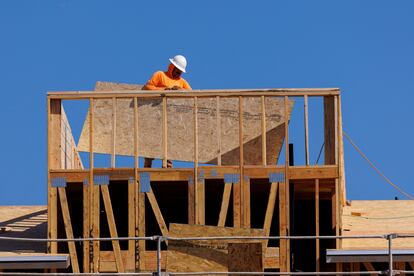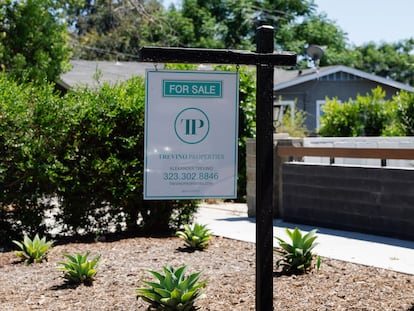Boost for homebuyers: Average long-term mortgage rate falls to 6.6%, lowest level since May
Home loan borrowing costs have been mostly coming down since late October, after the average rate on a 30-year mortgage surged to 7.79%, the highest level since late 2000

The average long-term U.S. mortgage rate fell this week to its lowest level since May, welcome news for prospective homebuyers facing rising home prices and intense competition for relatively few properties on the market.
The average rate on a 30-year mortgage dropped to 6.6% from 6.66% last week, mortgage buyer Freddie Mac said Thursday. A year ago, the rate averaged 6.15%.
The decline, which follows two weeks of increases, brings the average rate down to the lowest level it’s been in since late May, when it was 6.57%.
Borrowing costs on 15-year fixed-rate mortgages, popular with homeowners refinancing their home loans, also eased this week, dropping the average rate to 5.76% from 5.87% last week. A year ago, it averaged 5.28%, Freddie Mac said.
“This is an encouraging development for the housing market and in particular first-time homebuyers who are sensitive to changes in housing affordability,” said Sam Khater, Freddie Mac’s chief economist. “However, as purchase demand continues to thaw, it will put more pressure on already depleted inventory for sale.”
Home loan borrowing costs have been mostly coming down since late October, after the average rate on a 30-year mortgage surged to 7.79%, the highest level since late 2000.
The average rate remains sharply higher than just two years ago, when it was 3.56%. That large gap between rates now and then has helped limit the number of previously occupied homes on the market by discouraging homeowners who locked in rock-bottom rates from selling.
Still, the broad decline in rates since last fall is good news for homebuyers, as it boosts their purchasing power at a time when home prices have kept climbing rising despite a deep housing market slump. Sales of previously occupied U.S. homes sank more than 19% through the first 11 months of last year.
The decline in mortgage rates has followed a pullback in the 10-year Treasury yield, which lenders use as a guide to pricing loans. The yield, which in mid October surged to its highest level since 2007, has come down on hopes that inflation has cooled enough for the Federal Reserve to shift to cutting interest rates this year.
The central bank has indicated it will likely cut rates several times in 2024 because inflation has been cooling since its peak two summers ago. Uncertainty remains, however, on how many cuts the Fed may deliver this year and how soon it would begin.
If rates continue to ease, as many economists expect, that should help boost demand heading into the spring homebuying season, which traditionally begins in late February.
Still, at this point, economists generally predict the average rate on a 30-year mortgage going no lower than 6%.
Sign up for our weekly newsletter to get more English-language news coverage from EL PAÍS USA Edition
Tu suscripción se está usando en otro dispositivo
¿Quieres añadir otro usuario a tu suscripción?
Si continúas leyendo en este dispositivo, no se podrá leer en el otro.
FlechaTu suscripción se está usando en otro dispositivo y solo puedes acceder a EL PAÍS desde un dispositivo a la vez.
Si quieres compartir tu cuenta, cambia tu suscripción a la modalidad Premium, así podrás añadir otro usuario. Cada uno accederá con su propia cuenta de email, lo que os permitirá personalizar vuestra experiencia en EL PAÍS.
¿Tienes una suscripción de empresa? Accede aquí para contratar más cuentas.
En el caso de no saber quién está usando tu cuenta, te recomendamos cambiar tu contraseña aquí.
Si decides continuar compartiendo tu cuenta, este mensaje se mostrará en tu dispositivo y en el de la otra persona que está usando tu cuenta de forma indefinida, afectando a tu experiencia de lectura. Puedes consultar aquí los términos y condiciones de la suscripción digital.
More information
Archived In
Últimas noticias
Most viewed
- Oona Chaplin: ‘I told James Cameron that I was living in a treehouse and starting a permaculture project with a friend’
- Reinhard Genzel, Nobel laureate in physics: ‘One-minute videos will never give you the truth’
- Sinaloa Cartel war is taking its toll on Los Chapitos
- Why the price of coffee has skyrocketed: from Brazilian plantations to specialty coffee houses
- Silver prices are going crazy: This is what’s fueling the rally










































